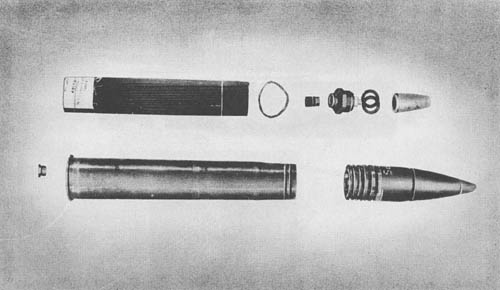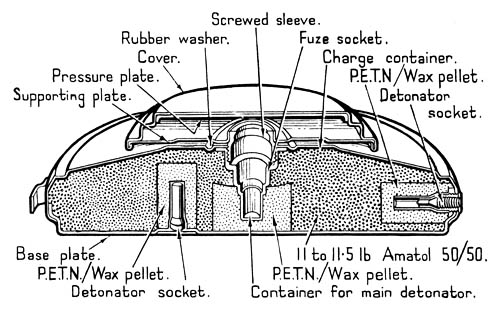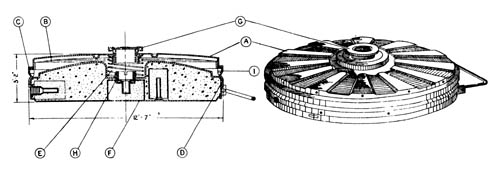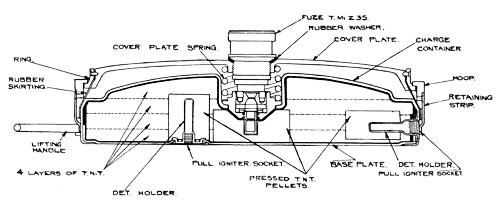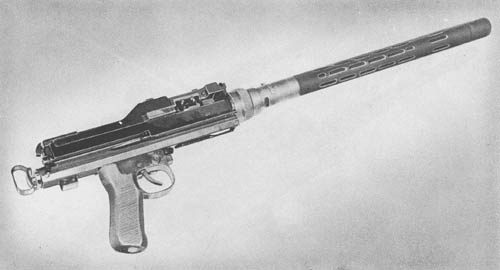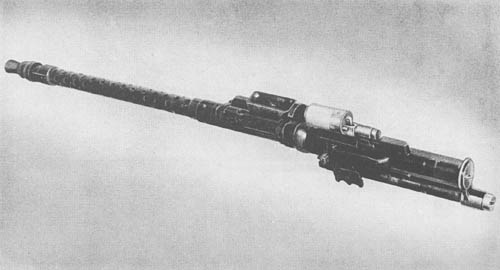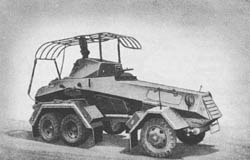 German nomenclature: Panzerfunkwagen (Sd. Kfz. 263) mit Fahrgestell des leichter geländegängiger Lastkraftwagen (o).
German nomenclature: Panzerfunkwagen (Sd. Kfz. 263) mit Fahrgestell des leichter geländegängiger Lastkraftwagen (o).
English designation: Armored radio car with special chassis of the light cross-country truck.
| Net weight | 5,250 kg | 11,573 lb. | ||
| Pay load | ||||
| Gross weight | 5,800 kg | 12,786 lb. | ||
| Weight: Front axle | 1,800 kg | 3,968 lb. | ||
| Weight: Rear axle | 2,000 kg | 4,409 lb. | ||
| Length (overall) | 5,570 mm | 18 ft., 4 ins. | ||
| Height (overall) | 2,930 mm | 9 ft., 7 ins. | ||
| Ground clearance | 240 mm | 9 1/2 ins. | ||
| Tread centers | 1,700 mm | 5 ft., 7 ins. | ||
| 1,840 mm | 6 ft. | |||
| Wheelbase | 2,500/900 mm | 98/35 ins. | ||
| Wheel width | 170-350 mm | 6 3/4/13 3/4 ins. | ||
| Tire size | ||||
| Angle of approach | 55° | |||
| Angle of departure | 40° | |||
| Seating capacity | ||||
| Fording depth | 600 mm | 23 ins. | ||
| Climbing ability | 13° | |||
| Overturn gradient (lengthwise) | 55° | |||
| Overturn gradient (crosswise) | 35° | |||
| Turning radius | 16 meters | 52 ft., 6 ins. | ||
| Trailer load | ||||
| Lifting power of winch | ||||
| Engine horsepower | 70 c—v | 69 hp | ||
| Piston displacement | 4,600 cu cm | 276 cu. ins. | ||
| Fuel tank capacity | 100 liters | 26.4 gal. | ||
| Highway fuel consumption | 5.9 m.p.g. | |||
| Average terrain fuel consumption | 3.6 m.p.g. |
German: p. 74.66
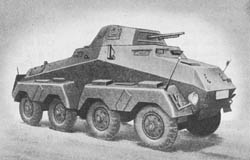 German nomenclature: schwerer Panzerspähwagen (Sd. Kfz. 231) (8 Rad).
German nomenclature: schwerer Panzerspähwagen (Sd. Kfz. 231) (8 Rad).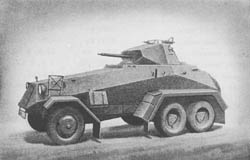 German nomenclature: schwerer Panzerspähwagen (Sd. Kfz. 231) mit Fahrgestell des leichter geländegangiger Lastkraftwagen (o).
German nomenclature: schwerer Panzerspähwagen (Sd. Kfz. 231) mit Fahrgestell des leichter geländegangiger Lastkraftwagen (o).